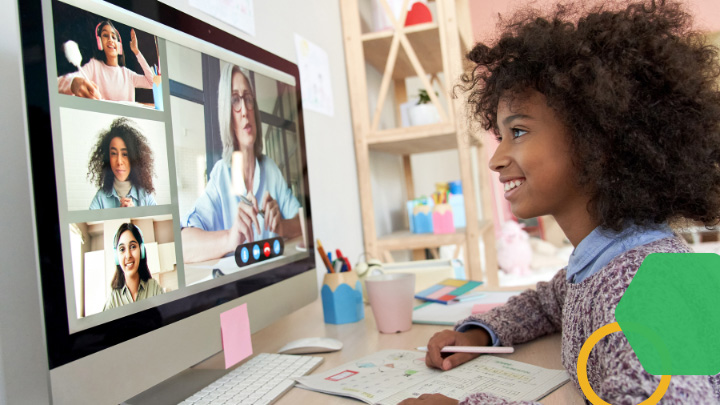As a BetterLesson instructional coach, I work 1:1 with teachers across the country, as well as facilitate small group discussions during Virtual Workshops. One question I have heard repeatedly is, “How can I get my students to actually turn in good work when working asynchronously?” In the spring, many of us saw work quality drop off over time. Now, as we get closer to November, I’ve heard from teachers in remote or hybrid settings that similar patterns are emerging: students are not completing work, or often turn in just the bare minimum. What can we do to get students to do high-quality work remotely?
As it turns out, the fundamental principles of what works in the classroom are what works online – it’s just a matter of uncovering new ways to achieve those ends. When addressing the quality of student work in asynchronous online learning, I focus on three big themes: student ownership, collaboration, and relationships.
Student Ownership: Give students a stake in the learning
The first thing I usually ask when a teacher poses this question is: What kind of ownership do your students feel about their learning? Typically, if students do not feel invested in the learning, it is less likely that they’ll put in the work and passion that we hope to see. Giving students more ownership in their learning does not mean that we give students complete control. Rather, small shifts that help students take agency over their learning can have a big effect.
One teacher I coach, Mike*, has made the shift from solely evaluating student progress himself to involving students to self-assess their progress using the Marzano Self-Assessment rubric. When students master a certain standard or skill, he throws a mini celebration for them on Zoom. He has gone from seeing students not completing work asynchronously and rarely showing up to office hours to students eager to prove their mastery of certain skills and asking for more practice opportunities. And of course, communicating and sharing students’ successes with families and the school community can also go a long way toward helping students feel invested in the learning process.
Collaboration: Learning is social
Our students crave social interaction. Leaning into this and creating spaces for students to connect and talk with one another can lead to more engagement and effort in their work.
One teacher I coach, Sonia*, rethought her virtual learning classes to allow more time for students to collaborate and saw a huge improvement in both the quality and quantity of work that students complete. Before her switch, the online structure of her class was generally a warm-up, a mini-lesson, and then students completed practice problems on their own. The problem was they were never actually doing the work asynchronously once they logged off the Zoom. She made a switch to have students in small breakout rooms almost immediately once they entered the Zoom meeting. In groups, students watched a video of a mini-lesson and then completed the practice problems together using GoFormative. She saw participation increase and the quality of the work go way up because students were naturally correcting each other. She even assigned roles, such as a notetaker, reporter, and facilitator, so students were held accountable.
Although some districts are limiting the use of breakout rooms, teachers can still provide opportunities for students to collaborate using other methods. Consider encouraging students to collaborate on a shared Google-Doc, add thoughts to a Padlet, or comment on one another’s FlipGrid videos.
Relationships: “They don’t care what you know until they know you care”
At the end of the day, getting students to put effort into our class often comes down to our relationships with them and their families. Forming these connections, however, is especially difficult without a traditional back-to-school experience and limited or no in-person experiences. To keep building relationships year-long with students, consider:
- Continuously taking time to check in with students about their wellbeing. In a normal school year, it’s easier to spot students who are having difficulties. Without seeing students in person at all or very much, it’s especially important that we take time to authentically check in with students. Consider using the I Wish My Teacher Knew strategy regularly.
- Leveraging your relationship with families to help students’ learning. Many families are burdened by online learning so always begin phone calls with a positive thing the student did in class. Remember to be empathic to the hard situation many families are in and seek to build a partnership. Check out the Creating and Implementing a Family Partnership Plan strategy.
As we head into the winter of what is surely one of the hardest years to be a teacher, you are not alone if you have noticed a drop off in students completing tasks or taking asynchronous learning seriously. But, hopefully, there are a few small instructional shifts that you can make to help students take more ownership of their learning, make learning more social, and continuously get to know your students and their families.








